
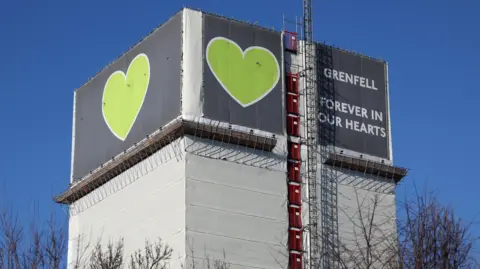 Rex Features
Rex FeaturesGrenfell Tower will be taken down, the government has confirmed nearly eight years after a fire that killed 72 people.
The process is expected to take around two years and will be done “sensitively”, with no changes to the building before the eighth anniversary of the disaster in June, the government said.
The plan has drawn a mixed reaction from local people, bereaved families and survivors – some of whom want the west London tower to remain standing as a lasting reminder of the 2017 tragedy.
Others argue its presence is distressing to those who lost loved ones and say it should be replaced by a memorial.
“It is clear from conversations it remains a sacred site,” the government said in a statement.
“It is also clear that there is not a consensus about what should happen to it.”
Materials from the site and parts of the 24-storey tower will be made available for inclusion as part of a memorial “if the community wishes”, the government added.
The decision to dismantle the building comes after engineers advised the tower “is significantly damaged”, the government said.
Fire damage to the upper levels of the tower has been exacerbated by weather, according to a 2020 report.
Experts have advised that the condition of the building will “continue to worsen over time” and it only remains stable due to additional protective measures put in place, the government said.
Engineers have also said it is “not practicable to retain many of the floors of the building in place” as part of a permanent memorial, it added.
Deputy Prime Minister Angela Rayner concluded it “would not be fair” to keep some floors of the building while dismantling others, as doing so would be “deeply upsetting” for survivors, according to the government’s statement.
A specialist contractor will be confirmed in the coming months to develop a detailed plan for taking down the tower, the government said.
The process of “careful and sensitive progressive deconstruction” will take place behind the tower’s wrapping, it added.
Some survivors and bereaved families have said the tower should remain as it is until people have been prosecuted over the fire.
No charges in relation to the tragedy will be announced until late 2026, the Metropolitan Police and Crown Prosecution Service (CPS) have said.
Some former residents were told about the decision to take down the tower during a meeting with Rayner on Wednesday.
A spokesperson for Grenfell United, which represents some bereaved families and survivors, said no-one at the meeting supported the plan, and that ignoring their wishes was “disgraceful and unforgivable”.
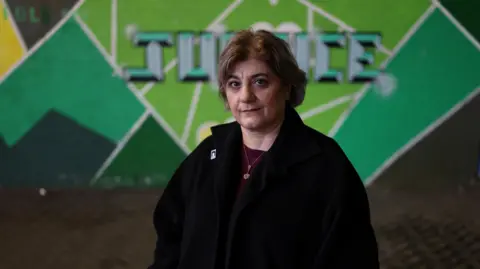 Reuters
ReutersKimia Zabihyan, from Grenfell Next of Kin, which also acts for some bereaved families, described the meeting as “charged” but said Rayner appeared to have attended with the “best of intentions”.
Downing Street said Rayner held the meeting to make sure bereaved families and survivors were the first to hear the government’s decision.
She offered bereaved family members and survivors the opportunity to meet in person and online “at different times and places”, and had “heard many views” through the process, the prime minister’s official spokesman said.
But Emma O’Connor, who lived on the 20th floor of tower and escaped the fire, said survivors had not been properly consulted about the plan and called on Rayner to “show us some respect”.
Ms O’Connor has launched a petition calling for local residents, survivors and bereaved family members to be allowed to vote on the tower’s future.
In its Friday statement, the government said Rayner will ensure bereaved families, survivors and residents “continue to have opportunities to speak to her” on issues relating to the tower.
It said Rayner was “committed to keeping their voice at the heart of this process”.
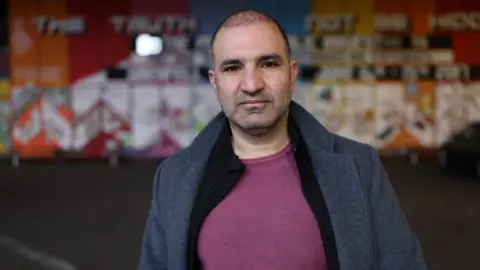 Reuters
ReutersHamid Ali Jafari, whose father was killed in the fire, said he feared removing the tower meant the tragedy would be forgotten.
“I feel like they’re trying to erase people’s memories, that they can’t remember what happened, and then they can hide whatever they’re doing.
“So it’s kind of upsetting.
“My dad has two cemeteries; one where we buried him and one is at Grenfell Tower.
“When the wind blows around the tower, I can feel my dad.”
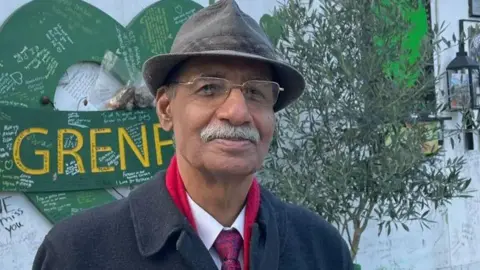
Others in the area have supported the move.
Speaking before the government’s decision was announced, the head of a local residents’ association said he and “the overwhelming majority” of locals were in favour of taking the tower down.
Mushtaq Lasharie, chairman of the Lancaster West Residents’ Association (LWRA), told the BBC on Wednesday locals had been waiting for “closure” for more than seven years.
Safety concerns meant there was “no other option” and the majority of residents supported the tower’s removal, he said, although a “small minority” wanted it to remain as a “symbol to remind people” of what happened.
Another local resident, Abbas Dadou, said the building had been “haunting us every day”.
“It is easy for other people who do not live in the area to say it should be there forever,” said Mr Dadou, who lives about 50m (165ft) from the site.
“Structurally, it is not safe and it needs to go at some point.”
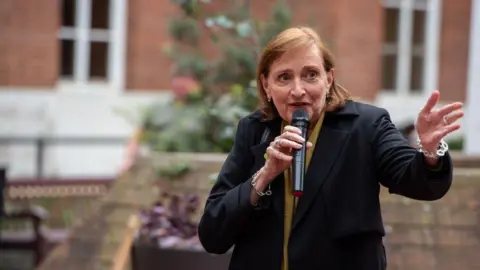 Getty Images
Getty ImagesEmma Dent Coad, who was Labour MP for Kensington at the time of the fire, on Wednesday said the decision made her feel “relieved”.
“I see it every day, and it hurts me every single day,” she said. “It triggers me sometimes, and sometimes when I look at it, I don’t see the shroud, I see what happened on that day.”
David O’Connell, another local resident, said he would like to see a permanent monument “that is 200ft (60m) tall, just like the tower” built at the site.
“I know a lot of people wanted the tower to stay but fundamentally it is not safe, it would deteriorate and something had to be done – but people do not want things to be swept under the carpet and dismissed.”
The monument would “remind people what happens when systems fail, and that 72 people lost their lives.”
The fire on 14 June 2017 was originally caused by a faulty fridge in a fourth-floor flat, but quickly spread around the block because it was covered in highly flammable cladding.
A public inquiry concluded in September that the disaster had been the result of numerous government and construction industry failures.
The Grenfell Tower Memorial Commission has been consulting on plans for a memorial in the area of the tower.
Five design teams have been shortlisted to create the memorial, with the winner aiming to submit a planning application in late 2026.



